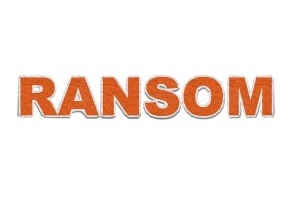Ransomware behind 1 in 3 cyber attacks against organisations

Positive Technologies published the Cybersecurity Threatscape report last week, which found that during the first quarter of this year 34% of malware-based cyberattacks on organisations were ransomware attacks. Sectors that were targeted the most included government agencies, industry, finance, and healthcare.
“Ransomware usually hits organisations that need access to time-sensitive data, for example, medical institutions, manufacturers, and municipal agencies. Hackers run a virus to breach an organisation’s system so that they can take control and lock employees or customers from using it,” explains Oliver Noble, an encryption specialist working for the file encryption tool NordLocker. “For most businesses, this brings production to a standstill. A company or a user then is extorted to pay money to get their access to the data restored. If the organisation fails to pay the ransom, the criminals threaten to destroy or expose its data publicly.”
According to the expert, there are no foolproof ways to protect yourself or your business from ransomware. However, the market is full of solutions that can minimise the consequences of the attack. The expert suggests 5 steps on how businesses can avoid or mitigate the risks of cybercrime against them.
1. Make sure your company uses an up-to-date antivirus and a robust firewall on every device or network it owns. The duo makes it harder for viruses to infiltrate your system. A reliable antivirus system also helps prevent your employees from accidentally downloading malware.
2. Regularly update your software and operating system. Updates usually include critical fixes that repair known security flaws and vulnerabilities. “Having the latest software version means you are using the most secure version, too,” says Oliver Noble.
3. Train your staff to recognise phishing scams and other forms of social engineering. Don’t let hackers or scammers bypass your security systems just because an employee opened a phishing email, clicked on a suspicious link, or downloaded an attachment with hidden malware.
4. To reduce the damage of any potential ransomware attacks, perform regular data backups. A periodically updated and secured backup will guarantee access to your data if hackers lock you out of your files. However, mind that cloud services come with their own privacy concerns, which is why the last step is crucial.
5. Start encrypting the information your company handles. According to the expert, file encryption tools such as NordLocker help you reduce the potential damage of ransomware. Even if hackers manage to steal your files, they won’t be able to access their content — so they won’t be able to threaten you with exposing the data. The best way to keep your valuable information safe is to encrypt it and back it up in the cloud so that hackers can’t threaten you with wiping it. Moreover, encryption helps protect confidential data from prying eyes when sharing it with clients or among members of staff.
Comment on this article below or via Twitter @IoTGN
